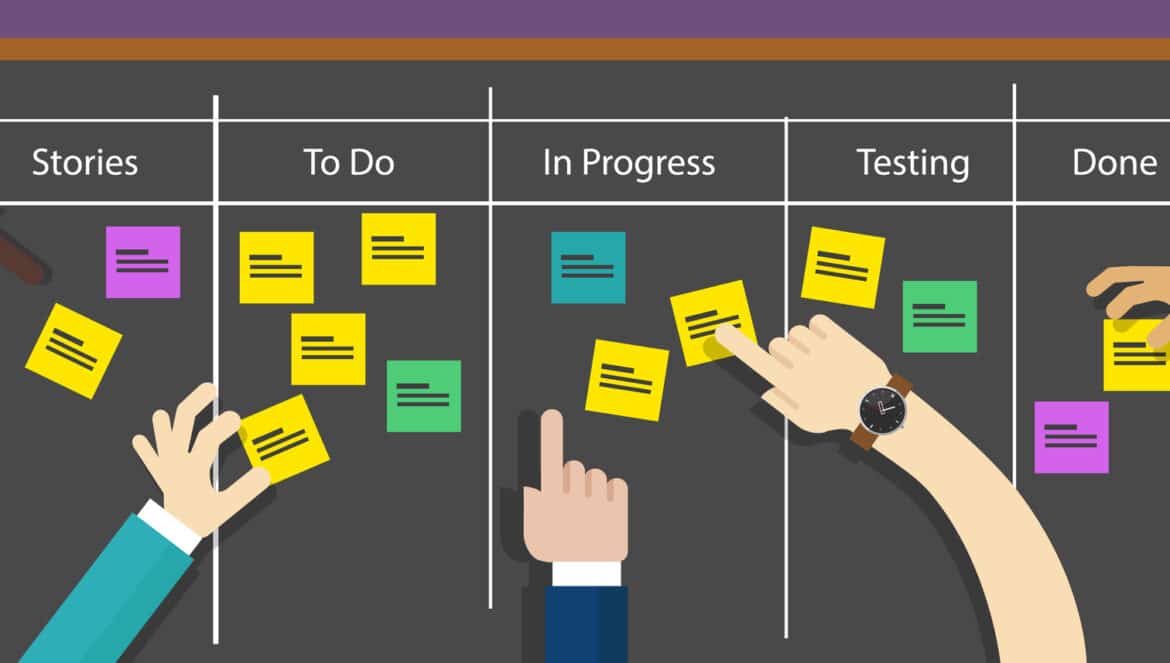Table of Contents
Agile was created to open lines of communication, ease collaboration, test and deliver frequently, and reflect often. With this in mind, agility, when introduced to administrative teams, eases the burden of work for everyone. An Agile administrator can run entire schools, develop curricula, manage people, and problem-solve in real-time. The tasks on the average To-Do list often grow without much being checked off, and work can easily multiply. That is why Agile on an administrative level is an absolute must.
Agile Administrator Tip #1: Only Meet When It Is Essential
Most administrative teams find themselves in daily meetings. Certain messages must be easily communicated with other levels of administration, teachers, parents, and students. This is where the Kanban board is essential. Just like teachers are able to prioritize work and use the Kanban board to visually track work, the administrative teams can do the same.
Break Up Tasks
When first introducing Agile to administrators, they are asked to break up their tasks into cards. All work gets color-coded and placed onto the Kanban board. The board is not the magic. The discussion, transparency, and reflection afterward unlock hours of time. The administrative team is asked about the purpose of the tasks, the intent of why work needs to be done, and how it will affect the overall school. Work is discussed in a transparent manner, sharing ideas and prioritizing work. The “busy” tasks fall to the bottom of the list, and the important work gains clarity among the team working on it.
This works wonders for busy schools, especially those working on strategic plans. The real priorities rise to the top of the board. People within the team can be assigned specific tasks, and once work begins, the board is used to monitor flow. When used properly by the team, members can check in and visually see what is being done and by whom. As cards move from “To Do” to “Doing,” “Refine,” and “Done,” the entire team can see what work is being done. This effectively stops the messiness of office politics, the need for constant meetings to check in on the status of work, and keeps motivation high.
In this setting, Agile is creating more efficient use of time by prioritizing and keeping track of work.
Agile Administrator Tip #2: Understanding Flow
A great benefit of agility schools is the balance of work between departments. Often when teams become busy, work falls to other departments to pick up. When teams are busy and unorganized, work gets shuffled, and it finally settles on the shoulders of the group with the least amount of power. With nowhere else for work to flow, the teachers are tasked with shouldering the burden of taking on more administrative and counseling tasks at the expense of time with students, lesson planning, and building relationships.
In Agile systems, this uneven distribution of work can be seen visually. It no longer is a feeling or a sense of more work. When tasks are created on the Kanban board, they can be seen and tracked visually. It is easy to see in fractions of a second what work is being done and who is doing it. As schools adopt Agile, efficient systems replace the outdated ways of working, and for most schools, this means less busy work and more purposeful work. Work is not easily shuffled between levels because there must be communication and reflection about the work before it moves. This saves “extra” work from landing on others’ plates while ensuring that all work is purposeful.
Establish Workflow
Lack of workflow is a pain point for teachers. It is why many teachers are leaving the field. We are hearing from passionate educators that they no longer have the time to teach, and work often overflows to after-school hours. When agility is adopted into schools, this conversation is made visual. All levels participate in the discussion. Transparency and communication help alleviate “us vs. them” mentalities and other negative feelings.
In Agile schools, work does not accumulate unnoticed on one level, and through Kanban boards, it is clear where tasks are building up. Agile has the ability to stop the process of teacher burnout as work is visually observed and flow can be measured.
Agile Administrator Tip #3: Concentrate on the Learning
Through new ways of working brought on by the pandemic, we have seen several different industries rethinking the way work is done. The education system should be no different. As an industry, we are the slowest to adapt to change. In Agile schools, this idea shifts.
- If students are able to pull work to be done at their own pace, does it need to be measured by time in the seat?
- If work is getting done in an office, does it need to be during normal work hours?
- Does the work being done serve the central purpose of the school?
- Are all of the tasks for the benefit of delivering the highest quality education to the students?
These questions should be the first asked anytime work is added to the Kanban board. This focus on delivering the best product to the client is highly regarded in industries focused on product creation, but these questions deserve a front-and-center place in education. Agile schools are focused on delivering the best educational experience for each student daily. When impediments arise, open minds need to question how to solve the problem. In administrative teams, it means focusing on work to best serve the students. This helps focus work, reduce bloat, and concentrate on the learning being done.
The values and principles of Agile in school systems solve several of the most pressing issues facing members of the education community. Students learn independence, their self-esteem grows, and their learning becomes meaningful. Teachers become facilitators of learning, regaining time to work with individual students and develop relationships. Administrators prioritize tasks and can visually manage workflow throughout the school without hours of meetings.






